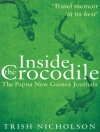This gritty, sweeping novel follows a burgeoning political activist in the early twentieth century: a ‘precious, priceless book’ (Alice Walker).
‘We owe our world to women like Agnes Smedley, who worked without peace or resolution toward a future they could not see.’ —Paola Mendoza
First released in 1929, Daughter of Earth remains a seminal work of American socialist literature. This semiautobiographical account of an early twentieth-century activist describes growing up in rural poverty in farming settlements and mining towns; discovering the double standards of race and sex among East Coast intellectuals; facing false espionage charges; and maintaining her independence through two tormented marriages.
Groundbreaking in its portrayal of sexism within the leftist movement, Daughter of Earth was uniquely prescient in its intersectional exploration of oppression, demanding that progressive movements embody political justice with integrity and introspection.
关于作者
Agnes Smedley (1892 – 1950) was an American journalist and writer, well known for her semi-autobiographical novel Daughter of Earth as well as for her sympathetic chronicling of the Communist forces in the Chinese Civil War. During World War I, she worked in the United States for the independence of India from the United Kingdom, receiving financial support from the government of Germany. Subsequently, she went to China, where she is suspected of acting as a spy for the Comintern. As the lover of Soviet super spy Richard Sorge in Shanghai in the early 1930s, she helped get him established for his final and greatest work as spymaster in Tokyo. She also worked on behalf of various causes including women’s rights, birth control, and children’s welfare. Smedley wrote six books, including a novel, reportage, and a biography of the Chinese general Zhu De, reported for newspapers such as New York Call, Frankfurter Zeitung, and Manchester Guardian, and wrote for periodicals such as the Modern Review, New Masses, Asia, New Republic, and The Nation.












